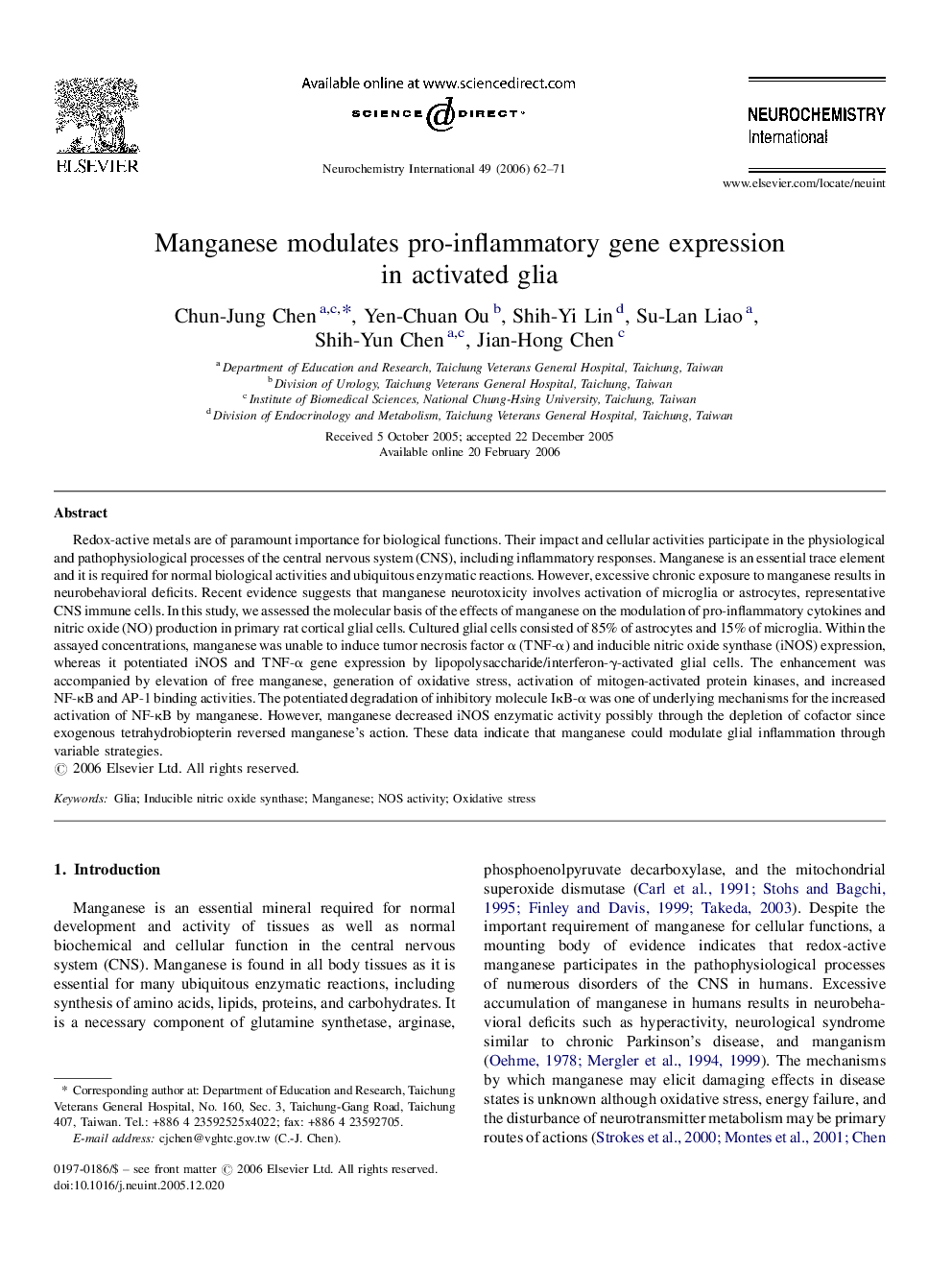| Article ID | Journal | Published Year | Pages | File Type |
|---|---|---|---|---|
| 2202069 | Neurochemistry International | 2006 | 10 Pages |
Redox-active metals are of paramount importance for biological functions. Their impact and cellular activities participate in the physiological and pathophysiological processes of the central nervous system (CNS), including inflammatory responses. Manganese is an essential trace element and it is required for normal biological activities and ubiquitous enzymatic reactions. However, excessive chronic exposure to manganese results in neurobehavioral deficits. Recent evidence suggests that manganese neurotoxicity involves activation of microglia or astrocytes, representative CNS immune cells. In this study, we assessed the molecular basis of the effects of manganese on the modulation of pro-inflammatory cytokines and nitric oxide (NO) production in primary rat cortical glial cells. Cultured glial cells consisted of 85% of astrocytes and 15% of microglia. Within the assayed concentrations, manganese was unable to induce tumor necrosis factor α (TNF-α) and inducible nitric oxide synthase (iNOS) expression, whereas it potentiated iNOS and TNF-α gene expression by lipopolysaccharide/interferon-γ-activated glial cells. The enhancement was accompanied by elevation of free manganese, generation of oxidative stress, activation of mitogen-activated protein kinases, and increased NF-κB and AP-1 binding activities. The potentiated degradation of inhibitory molecule IκB-α was one of underlying mechanisms for the increased activation of NF-κB by manganese. However, manganese decreased iNOS enzymatic activity possibly through the depletion of cofactor since exogenous tetrahydrobiopterin reversed manganese's action. These data indicate that manganese could modulate glial inflammation through variable strategies.
